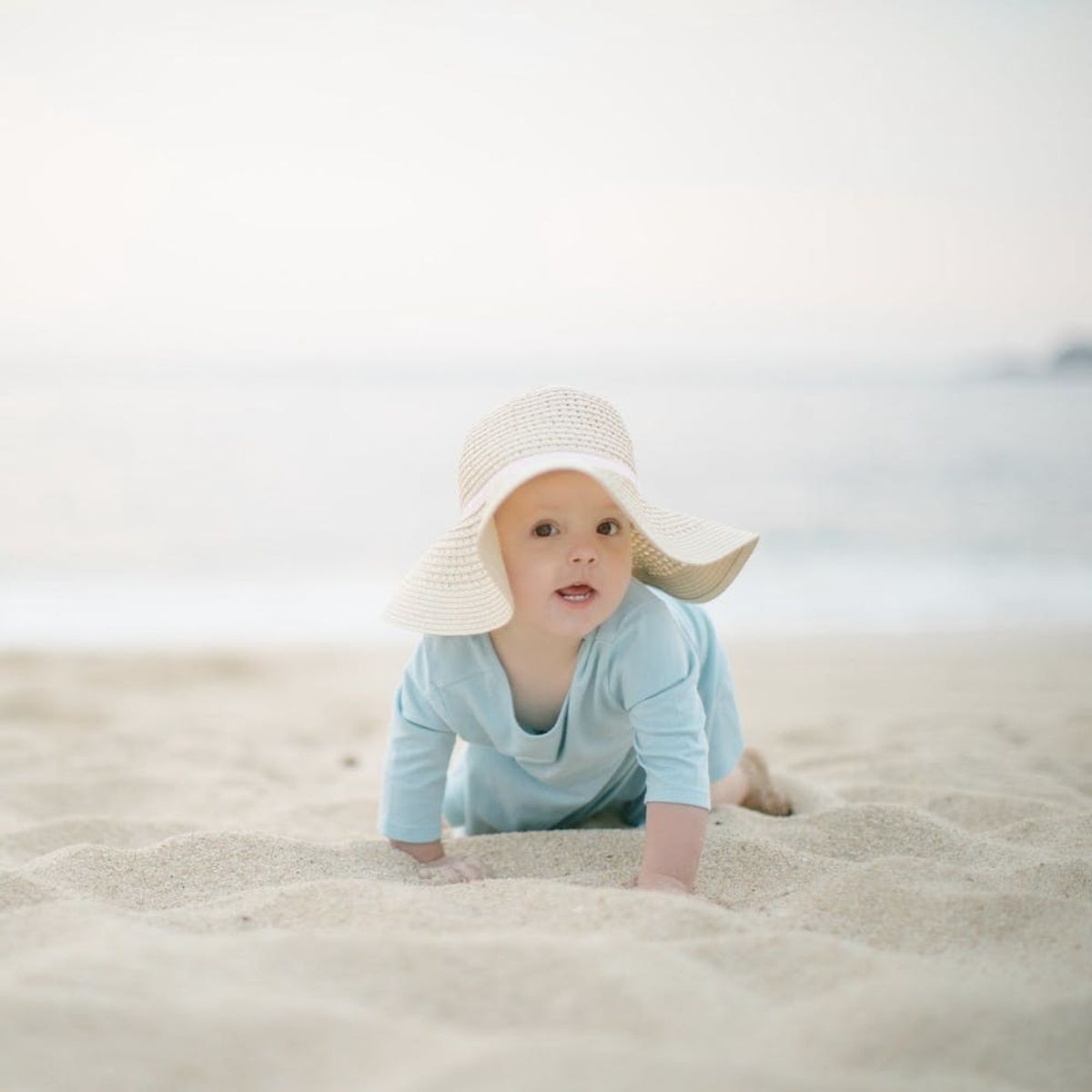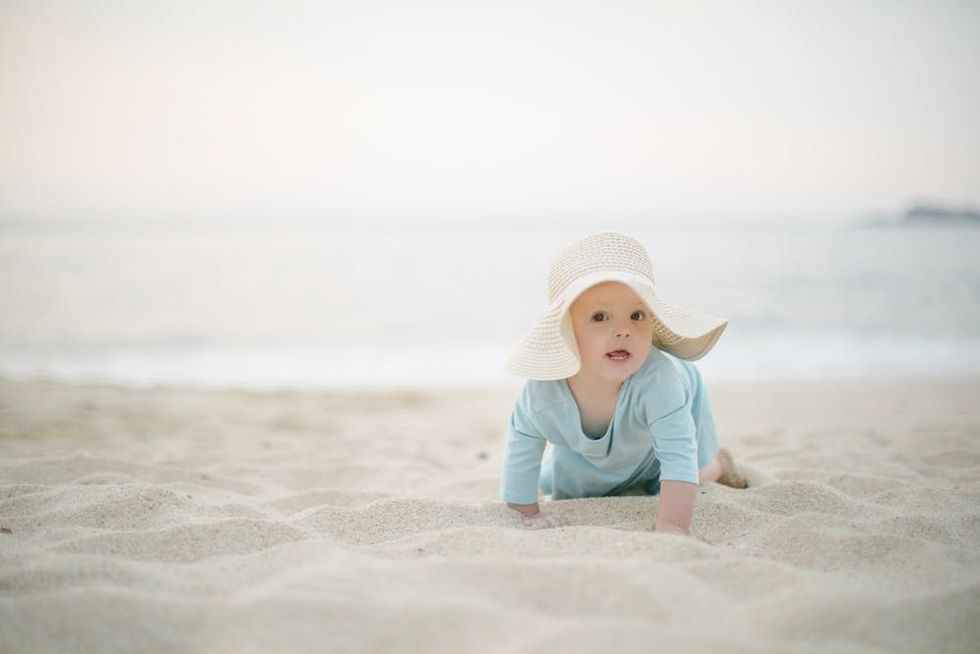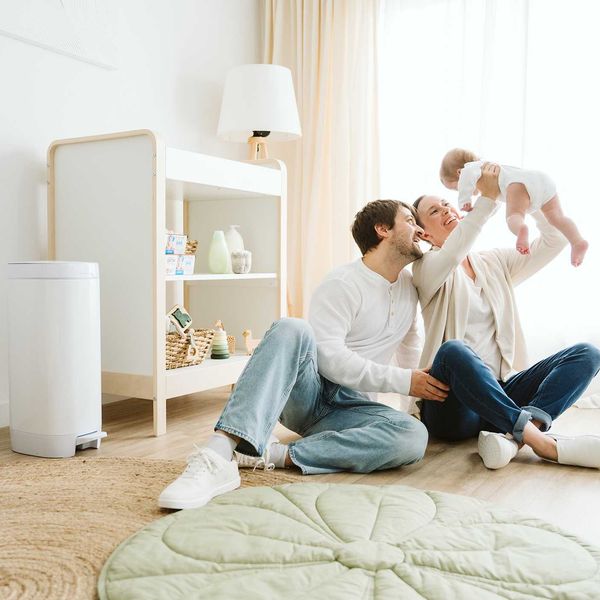Swim safe.
12 Tips to Keep Your Kids Safe In the Water This Summer

Now that the snow shovels are packed away and the flip-flops are out, it’s time to start thinking water safety. Your curious tot wants to know everything (witness the infinite stream of why questions they ask 24/7). With that curiosity comes a taste for danger — at least the pint-sized version of it. Before you head out to the pool, the beach, the water park, or a backyard sprinkler-fest, check out the water safety basics that you need to know right now.

1. It only takes seconds. Forget about minutes. Turning your back on a toddling two-year-old could put them in jeopardy before you can say, “Don’t go near the pool.”
2. There is no substitute for supervision. Water-wings are helpful and baby gates can keep the kiddos out of the pool area when used properly. But there is no substitute for supervision — that is constant, ADULT supervision. Don’t expect your eight-year-old to mindfully watch your two-year-old or the neighbor’s tween to keep an eye on your toddler.
3. Swim lessons can reduce the risk. While knowing how to swim doesn’t eliminate water dangers, it can help, according to the American Academy of Pediatrics (AAP). Children should start swim lessons between ages one and four. Before signing your tot up for swim lessons, make sure that the school/instructor has specialized training in working with young children. This is not a job for your ninth grade neighbor who happens to be on the school swim team to tackle.
4. Don’t ignore shallow water. Paddling pools, buckets of water, a full sink, a bird bath, and other seemingly shallow areas still pose a serious drowning risk for the young child. Never leave your child unattended around any amount of water — even if it seems small to you.
5. Wear life jackets. The AAP stresses the importance of wearing a US Coast Guard-approved life jacket on or in all watercraft. Along with keeping your kiddo safe on the high seas, life jackets can reduce the drowning risk when worn correctly near or in any body of water. This includes pools, the ocean, lakes, rivers, and creeks.
6. Learn CPR. CPR can save a life. Choose a class that includes infant and child techniques as well as how to perform CPR on an adult. Refresh your knowledge regularly with a repeat class as needed. Don’t assume you’ll remember what you learned a decade or two ago during your high school lifeguard training session.
7. Fence off the pool area. Corral the pool area with a four-foot tall or higher fence. Make sure that the fence sits low to or flush with the ground and doesn’t have slats wide enough for your child to fit through. The AAP recommends using a self-closing, self-latching gate that opens away from the pool area and has a latch/lock 54 inches or higher off the ground. Always remember, even though a locked fence reduces the risk of drowning, it isn’t a magic barrier. Again, there is no substitution for adult supervision.
8. Never allow your child outside unattended. Whether you have a fenced off pool, you’re at a beach-side rental, or you have a bird bath in the middle of the yard, going outside to play can turn into a dangerous drowning situation quickly. Lock all exterior doors, use child-proof doorknob covers, and keep windows closed and/or locked.
9. Talk to friends and neighbors. Your house is water safe. But is your neighbor’s? What about your preschooler’s playdate’s home? Before you leave your child at anyone else’s house, talk to the adult in charge about water safety. Ask questions about pool gates or playtime games that include water if you don’t feel comfortable.
10. Water wings are not flotation devices. Remember those life vests that your child is required to wear on deck or in any other watercraft? Water wings are not the same as US Coast Guard-approved life jackets. Never assume that blow-up flotation devices that your child wears, sits on, or sits in will prevent or reduce the risks of drowning.
11. Keep a phone handy. Accidents happen — even when the most vigilant of parents are present. Have a phone nearby during pool, beach, and water play times, just in case.
12. Talk to your child. As soon as your child is old enough to understand and follow the pool or water rules, discuss safe practices. This includes items such as only using the pool/going into the water when a grown-up is watching, staying away from pool drains, and wearing a life vest.
RELATED: The Basic Checklist for Baby-Proofing Your Home
(Photo via Getty)


















